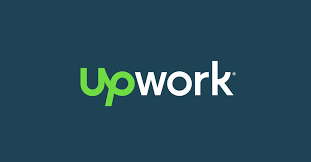Upwork is known as one of the leading platforms for freelancers and clients to connect and collaborate on various projects. It has been designed to offer opportunities for skilled professionals to offer their services across a range of industries. Through Upwork, businesses are able to access a global talent pool, while freelancers can find work opportunities that suit their skills and availability. A comprehensive understanding of how to use Upwork, along with its pros and cons, is essential for maximizing the benefits of this platform.
What is Upwork?
Upwork is recognized as an online platform that connects freelancers with clients seeking professional services. It was created in 2015 through the merger of two popular freelance platforms, Elance and oDesk. Since then, it has grown into a large marketplace where a variety of services are offered, including writing, graphic design, programming, virtual assistance, marketing, and more. Upwork is known for its wide range of freelancers, from beginners to seasoned experts, making it a versatile platform for different types of projects.
How to Use Upwork
- Creating an Account: To start using Upwork, an account must first be created. Users can sign up either as a freelancer or as a client. The sign-up process involves providing basic information, including name, email, and the creation of a secure password. Once the account is set up, a profile will need to be created.
- Building a Profile: For freelancers, it is important to build a strong profile. This profile serves as a resume, showcasing skills, experience, and qualifications. A professional photo, a detailed description of services, and examples of past work should be included. For clients, the profile will focus on business information and the types of projects that are typically outsourced.
- Searching for Jobs or Freelancers: After the profile is complete, the platform is ready to be explored. Freelancers can search for jobs by using filters to narrow down search results by category, budget, experience level, and project duration. Clients can search for freelancers by skills, location, and hourly rate.
- Submitting Proposals: Freelancers are required to submit proposals to bid on jobs. In the proposal, freelancers should explain how their skills match the project requirements, and they should include an estimated cost and timeline for completion. Clients can review proposals, check freelancers’ profiles, and communicate with potential candidates before making a hiring decision.
- Project Management: Once a freelancer is hired, project management tools are available on Upwork to facilitate communication and track progress. The platform allows files to be shared, deadlines to be set, and milestones to be tracked. Time tracking is also available for hourly projects.
- Payments and Invoicing: Payments are handled securely through Upwork. For fixed-price projects, funds are placed in escrow and are only released when the client is satisfied with the work. For hourly projects, freelancers log their hours, and payments are automatically processed each week. Upwork also provides invoicing and reporting tools to help freelancers and clients manage their finances.
Pros of Using Upwork
- Access to a Global Talent Pool: Upwork provides access to a diverse range of professionals from around the world. Clients can find experts in almost any field, and freelancers have the opportunity to work with clients from different countries.
- Flexibility in Work: Freelancers can choose projects that fit their schedule, allowing them to work at their own pace. This flexibility is particularly beneficial for those who prefer to manage their own time.
- Secure Payment System: Upwork’s payment system is designed to ensure that both freelancers and clients are protected. Funds are held in escrow for fixed-price projects, and payments for hourly projects are automatically processed based on logged hours.
- Comprehensive Project Management Tools: The platform offers a variety of tools for managing projects, including communication, file sharing, and time tracking. These tools help to keep projects on track and ensure that both parties are clear on expectations and deadlines.
- Feedback and Rating System: Upwork’s feedback and rating system allows clients to evaluate freelancers based on their performance. This system helps to build trust within the community and assists clients in making informed hiring decisions.
Cons of Using Upwork
- High Competition: Due to the large number of freelancers on Upwork, competition for jobs can be intense. New freelancers may find it challenging to secure their first few projects, especially when competing against more experienced professionals.
- Service Fees: Upwork charges freelancers a service fee for each payment received. The fee is based on a sliding scale, starting at 20% for the first $500 earned from a client. While the fee decreases as more work is completed with the same client, it can still be considered high, especially for smaller projects.
- Potential for Low-Paying Jobs: Some clients on Upwork may offer low rates for jobs, which can be discouraging for freelancers seeking fair compensation. It may take time and effort to find clients who are willing to pay competitive rates.
- Risk of Unreliable Clients or Freelancers: As with any online platform, there is a risk of encountering unreliable clients or freelancers. Despite Upwork’s efforts to vet users and provide a secure environment, disputes may still arise. It is important to thoroughly review profiles, feedback, and ratings before entering into a contract.
- Limited Communication: Upwork encourages communication to be kept within the platform, which can sometimes limit the ability to build a strong working relationship. The platform’s messaging system may not always be sufficient for more complex projects that require detailed discussions.
Top 10 Upwork Alternatives

The search for reliable freelance platforms is ongoing, especially for those seeking alternatives to Upwork. Upwork, though popular, may not suit everyone’s needs due to its fees, competition, or the types of projects available. Fortunately, several other platforms have been recognized for their unique features, offering freelancers and clients different opportunities. Below is an exploration of the top 10 Upwork alternatives, highlighting what each has to offer.
1. Freelancer.com
Freelancer.com has been widely regarded as one of the oldest and most extensive platforms for freelancers. The platform’s bidding system has been appreciated by many users, allowing for competitive pricing and diverse project types. However, some users have found the fee structure complex, which should be carefully considered before committing to the platform.
2. Fiverr
Fiverr has become famous for its unique approach, where freelancers create “gigs” for services they offer. The platform’s focus on micro-jobs has allowed freelancers to showcase specific skills and set clear pricing. While the entry barrier is low, the competition has been noted as intense, making it essential to stand out with quality services.
3. Toptal
Toptal has been highly regarded as a premium platform that focuses on connecting top-tier talent with high-quality clients. Unlike Upwork, Toptal has implemented a rigorous screening process, ensuring that only the top 3% of freelancers are accepted. While this ensures high-quality work, it has been observed that the platform may not be suitable for beginners or those seeking less competitive environments.
4. PeoplePerHour
PeoplePerHour has provided freelancers with an opportunity to connect with clients in a more personalized manner. The platform’s focus on hourly work and the ability to showcase previous work has appealed to many freelancers. However, some users have noted that the platform’s fees can be higher than others, especially for long-term projects.
5. Guru
Guru has offered a versatile platform where freelancers can showcase their skills across various categories. The platform’s WorkRoom feature has been particularly praised for its ability to manage projects and collaborate with clients seamlessly. Despite its advantages, some freelancers have found the competition on Guru to be tough, particularly for newcomers.
6. 99designs
99designs has stood out as a platform specifically designed for designers. The platform’s focus on design contests has been unique, allowing clients to choose from various entries. Freelancers have found this to be an exciting way to showcase creativity, but the contest-based system has also been criticized for not guaranteeing payment unless the design is selected.
7. SimplyHired
SimplyHired has operated as a job search engine that aggregates freelance opportunities from across the web. This platform has been valued for its broad reach and ability to connect freelancers with various job types. However, it has been observed that the lack of a dedicated freelance community may lead to less personalized experiences compared to platforms like Upwork.
8. FlexJobs
FlexJobs has specialized in offering remote and flexible job opportunities, including freelance work. The platform’s focus on quality and legitimate job postings has been appreciated by many users. However, it should be noted that FlexJobs operates on a subscription-based model, which might deter some freelancers from exploring its offerings.
9. TaskRabbit
TaskRabbit has been recognized for its focus on local, on-demand freelance work. The platform has allowed freelancers to offer various services, from home repairs to personal assistance. While this approach has provided a unique opportunity for those seeking local work, it has been noted that the platform’s availability is limited to certain regions, potentially reducing its accessibility.
10. Outsourcely
Outsourcely has been dedicated to connecting remote workers with startups and growing businesses. The platform’s emphasis on long-term relationships rather than one-off projects has been appreciated by both freelancers and clients. However, it has been observed that the platform may not offer as many opportunities as larger platforms like Upwork, making it essential to be patient when seeking work.
Conclusion
The alternatives to Upwork have provided diverse opportunities for freelancers across various industries. Each platform has its unique features, catering to different needs and preferences. Whether one is seeking a premium platform like Toptal, a design-focused community like 99designs, or a broad-reaching job aggregator like SimplyHired, there are options available to suit different freelance goals.
The exploration of these alternatives should be done carefully, considering factors such as fees, competition, the types of projects available, and the platform’s overall reputation. By doing so, it is possible to find a platform that aligns with individual goals and preferences, allowing for a more fulfilling freelance experience.
This log has highlighted the key features, advantages, and potential drawbacks of each platform, offering a comprehensive overview of the top 10 Upwork alternatives. Whether one is a seasoned freelancer or just starting, these platforms can provide valuable opportunities to grow and succeed in the freelance world.
Conclusion
Upwork offers a valuable platform for both freelancers and clients, providing opportunities to connect and collaborate on a wide range of projects. While it comes with its challenges, such as high competition and service fees, the benefits of flexibility, access to global talent, and secure payment processes make it an attractive option for many. By understanding how to effectively use Upwork and being aware of its pros and cons, users can maximize their chances of success on the platform.










